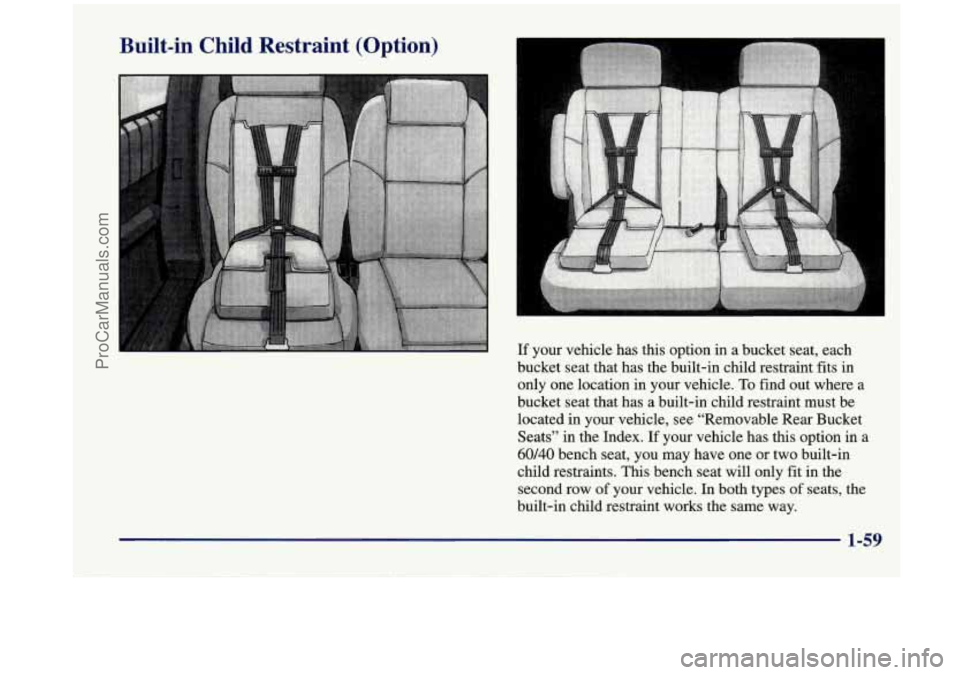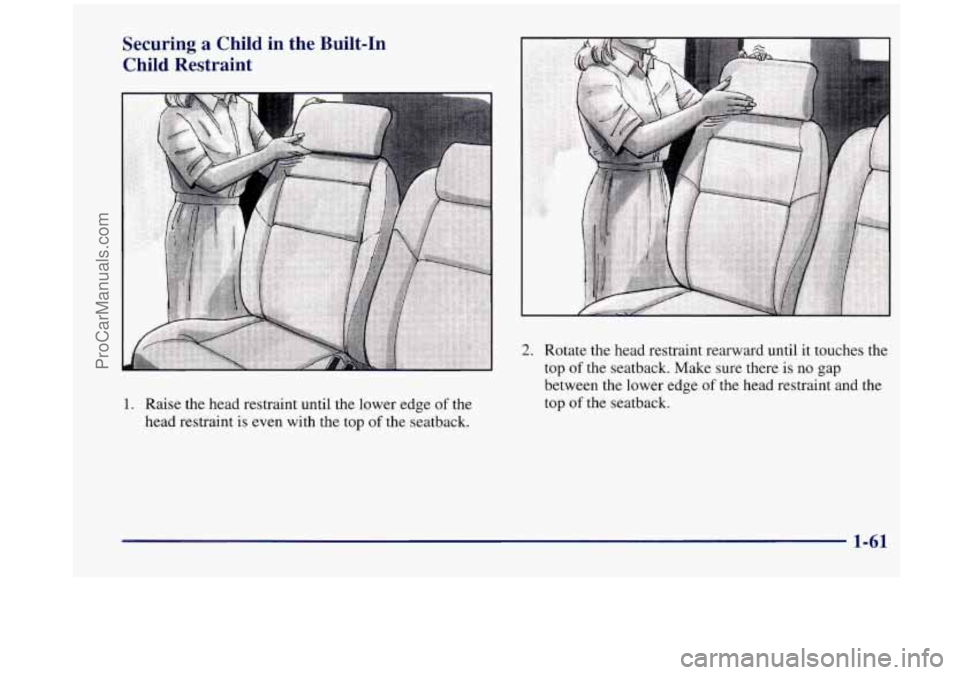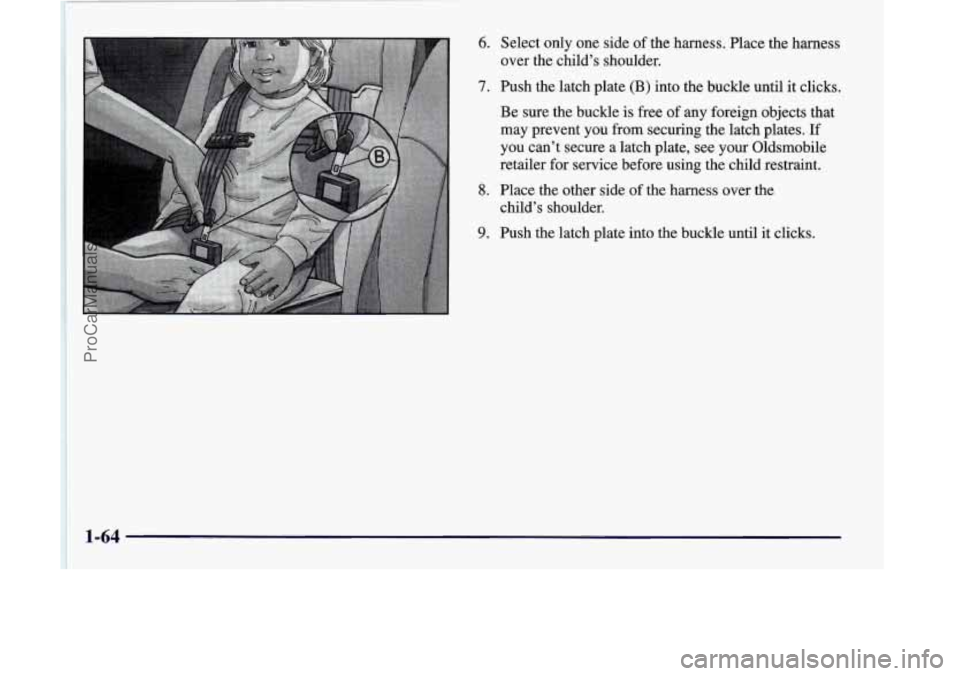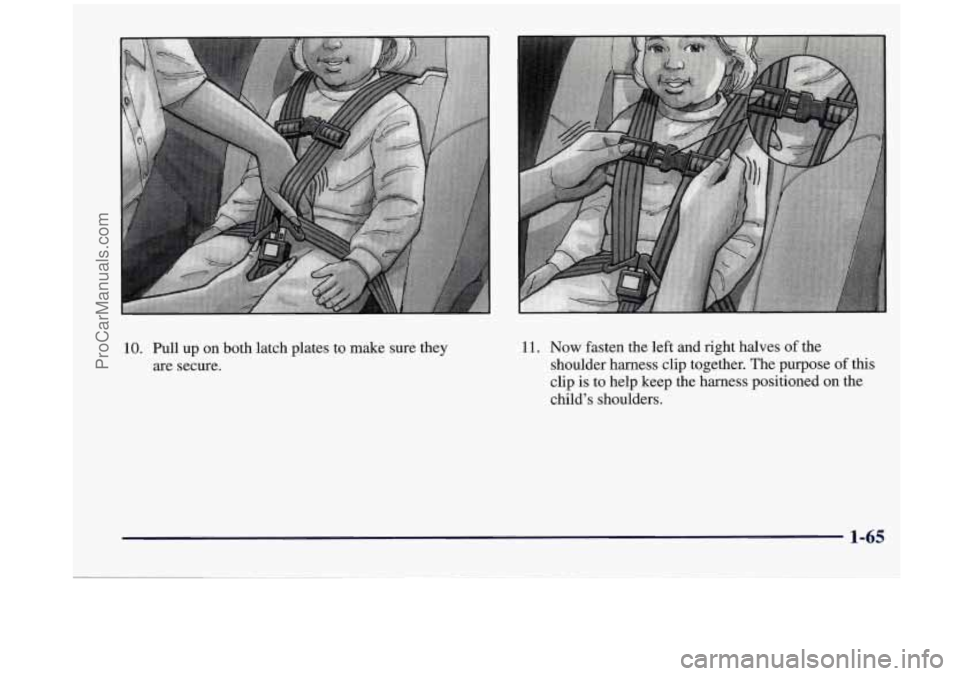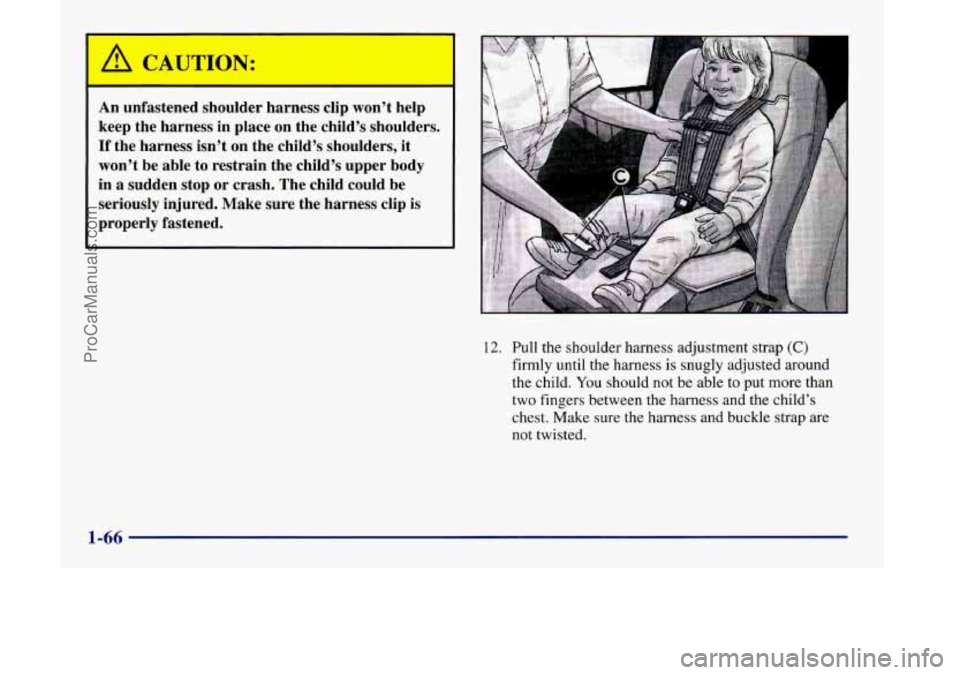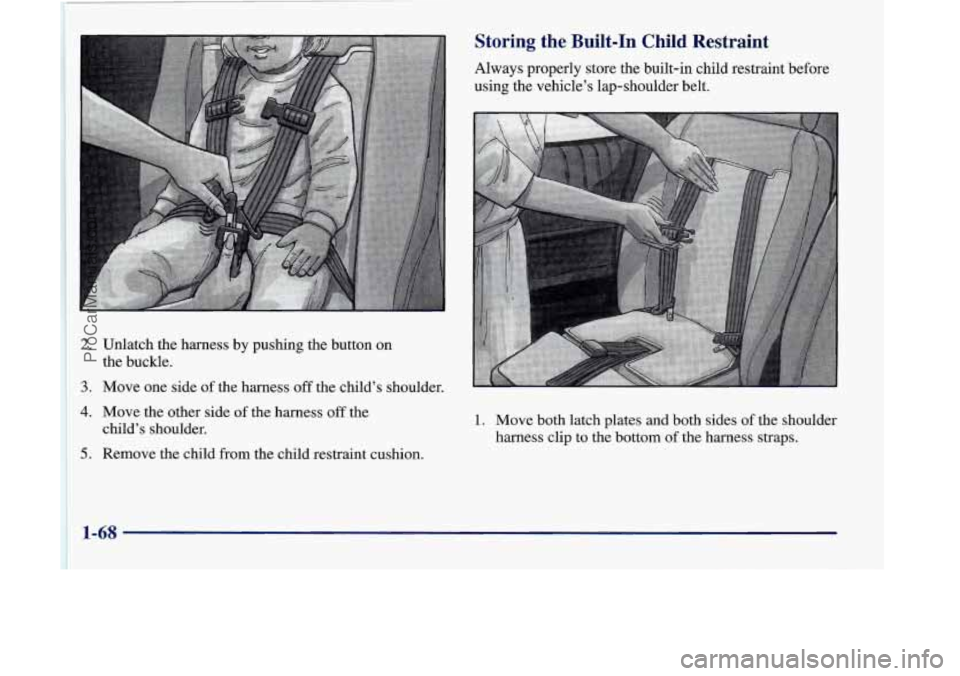OLDSMOBILE SILHOUETTE 1998 Manual PDF
SILHOUETTE 1998
OLDSMOBILE
OLDSMOBILE
https://www.carmanualsonline.info/img/31/58205/w960_58205-0.png
OLDSMOBILE SILHOUETTE 1998 Manual PDF
Trending: engine oil capacity, transmission fluid, wheel bolts, sport mode, ECU, water pump, wheel torque
Page 71 of 444
Built-in Child Restraint (Option)
If your vehicle has this option in a bucket seat, each
bucket seat that has the built-in child restraint fits in
only one location in your vehicle.
To find out where a
bucket seat that has a built-in child restraint must be
located in your vehicle, see “Removable Rear Bucket
Seats” in the Index.
If your vehicle has this option in a
60/40 bench seat, you may have one or two built-in
child restraints.
This bench seat will only fit in the
second row
of your vehicle. In both types of seats,
built-in child restraint works the same way. the
1-59
ProCarManuals.com
Page 72 of 444

This child restraint system conforms to all applicable
Federal Motor Vehicle Safety Standards.
Each child restraint is designed for use only by children
who weigh between
22 and 40 pounds (10 and 18 kg)
and whose height is between 33.5 and 40 inches
(850 and 1 016 mm) and who are capable of sitting
upright alone.
The child should
also be at least one year old. It is
important to use a rear-facing infant restraint until the
child is about a year old.
A rex-facing restraint gives
the infant’s head, neck and body the support they would
need in a crash. See “Child Restraints” later in this
section for more information.
&: What if the top of my child’s shoulders is above
the shoulder belt slots for the five-point child
restraint harness system?
A: A child whose shoulders are above the shoulder
belt slots for the five-point child restraint harness
system shouldn’t use
this child restraint. Instead,
the child should sit
on the vehicle’s regular seat
cushion and use the vehicle’s adult safety belts.
BEFORE YOU USE THIS CHILD RESTRAINT,
BE SURE THE TOP
OF THE CHILD’S
SHOULDERS
IS BELOW THE SLOTS THAT
THE HARNESS GOES THROUGH.
A CHILD
WHOSE SHOULDERS ARE ABOVE THOSE
SLOTS COULD BE INJURED DURING
A
SUDDEN STOP OR CRASH. IF THE TOP OF
THE CHILD’S SHOULDERS IS ABOVE THE
SLOTS, DON’T USE
THIS CHILD
RESTRAINT WHILE THE VEHICLE
IS
IN MOTION.
1-60
ProCarManuals.com
Page 73 of 444
Securing a Child in the Built-In
Child Restraint
1. Raise the head restraint until the lower edge of the
head restraint is even with the top
of the seatback.
2. Rotate the head restraint rearward until it touches the
top
of the seatback. Make sure there is no gap
between the lower edge
of the head restraint and the
top
of the seatback.
1-61
ProCarManuals.com
Page 74 of 444
3. Lower the child restraint cushion. You’ll be using the child restraint’s harness (A) to
secure your child. Don’t
use the vehicle’s
safety belts.
1-62
ProCarManuals.com
Page 75 of 444

Using the vehicle’s regular safety belts on a child
seated on the child restraint cushion can cause
serious injury to the child in a sudden stop or
crash.
If a child is the proper size for the built-in
child restraint, secure the child using the child
restraint’s harness. But children who are too
large for the built-in child restraint should sit on
the vehicle’s regular seat and use the vehicle’s
adult safety belts.
WARNING! FAILURE TO FOLLOW THE
MANUFACTURER’S INSTRUCTIONS ON THE
USE
OF THIS CHILD RESTRAINT SYSTEM
CAN RESULT IN YOUR CHILD STRIKING THE
VEHICLE’S INTERIOR DURING A SUDDEN
STOP OR CRASH. SNUGLY ADJUST THE
BELTS PROVIDED WITH THIS CHILD
RESTRAINT
AROUND YOUR CHILD.
4. Before placing the child in the child restraint, add
slack to the shoulder harness. Pull the black shoulder
harness release strap
firmly. At the same time pull
both shoulder harness straps through the slots in the
seatback as shown.
5. Place the child on the child restraint cushion.
1-63
ProCarManuals.com
Page 76 of 444
6. Select only one side of the harness. Place the harness
over the child’s shoulder.
7. Push the latch plate (B) into the buckle until it clicks.
Be sure the buckle
is free of any foreign objects that
may prevent you from securing the latch plates.
If
you can’t secure a latch plate, see your Oldsmobile
retailer for service before using the child restraint.
8. Place the other side of the harness over the
child’s shoulder.
9. Push the latch plate into the buckle until it clicks.
1-64
ProCarManuals.com
Page 77 of 444
10. Pull up on both latch plates to make sure they
are secure. 11. Now fasten the left and right halves of the
shoulder harness clip together. The purpose of this
clip is to help keep the harness positioned
on the
child’s shoulders.
1-65
ProCarManuals.com
Page 78 of 444
An unfastened shoulder harness clip won’t help
keep the harness in place on the child’s shoulders.
If the harness isn’t on the child’s shoulders, it
won’t be able to restrain the child’s upper body
in a sudden stop or crash. The child could be
seriously injured. Make sure the harness clip is properly fastened.
12. Pull the shoulder harness adjustment strap
(C)
firmly until the harness is snugly adjusted around
the child. You should not be able to put more than
two fingers between the harness and the child’s
chest. Make sure the harness and buckle strap are
not twisted.
1-66
ProCarManuals.com
Page 79 of 444
13. Adjust the position of the harness on the child’s
shoulder by moving the clip up or down along the
harness. On each side of the harness, the shoulder
part should be centered on the child’s shoulder. The
harness should be away from the child’s face and
neck, but not falling from the child’s shoulders.
If you expect that the child will sleep while riding,
you can recline the seatback. See “Seats” in
the Index.
Removing the Child from the Built-In
Child Restraint
1. Unfasten the shoulder harness clip.
1-67
ProCarManuals.com
Page 80 of 444
~ 2. Unlatch the harness by pushing the button on
the buckle.
3. Move one side of the harness off the child’s shoulder.
4. Move the other side of the harness off the
child’s shoulder.
5. Remove the child from the child restraint cushion.
1. Move both latch plates and both sides of the shoulder
harness clip to the bottom
of the harness straps.
1-68
ProCarManuals.com
Trending: winter tires, wheelbase, AUX, wheel torque, height, wiper blades, oil additives
